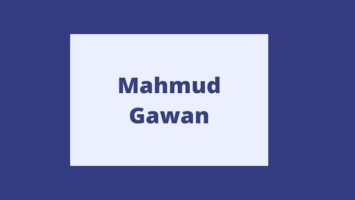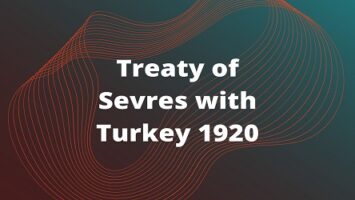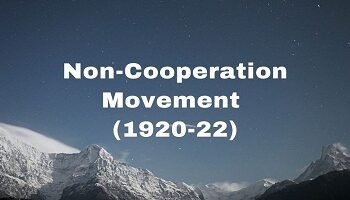Bahmani Kingdom:
In southern India and the Deccan, there were two principal states- the Bahmani and the Vijayanagar kingdoms. They had little or no influence on North Indian politics but their mutual relation was of constant war against each other which ultimately brought about the end of both of them leading to the foundation of a number of smaller succession states.
The Bahmani kingdom was founded in 1347 by Alauddin Hasan Bahman Shah or Hasan Gangu during the reign of Sultan Muhammad bin Tughluq. He made Gulbarga the capital in place of Daulatabad. The dynasty lasted till 1518 and had a total of 14 kings, four of whom viz., Alauddin Hasan (1347-1358), Muhammad I (1358-1377), Firuz Shah (1398-1422) and Ahmad Shah Wali (1422-1435) are more famous.
Alauddin Hasan divided the kingdom into four units called the ‘tarafs‘. The officer of each one of them was called tarafdar and he was expected to maintain law and order and collect the royal dues. These tarafdars had their headquarters at Gulbarga, Daulatabad, Berar and Bidar.
During the reign of his son Muhammad I, administrative reorganization went further ahead and his wazir Saifuddin Ghori divided the business of the central government into a number of departments and entrusted them to the care of eight principal ministers. Their designations and functions were as follows-
- Vakilus-Saltanat- He corresponded to Malik Naib or Vakil under the Sultans of Delhi.
- Wazir-i-Kul- He supervised the work of every minister except the Vakil.
- Amir-i-Jumla- He was the head of the Finance Department.
- Wazir-i-Ashraf- He attended to foreign relations and duties at court.
- Nazir- He was attached to the finance department and acted ass its deputy minister.
- Peshwa- He was attached to the Vakil.
- Kotwal- He was the head of the police and maintained law and order.
- Sadr-i-Jahan- He was the head of the judicial, ecclesiastical and charity departments.
Having organized their internal administration, they turned towards territorial aggrandisement. They sometimes collided against the rulers of Malwa, Khandesh and Gujarat also, but their wars against the Hindu Rajas of Orissa, Vijayanagar and Warangal were almost intermittent. These wars were mainly inspired by the lust for power and religious fanaticism. Hindu Rajas dreamed of cleansing the Deccan of the rule of the mlechchhas. Hence they attacked the Bahmanids whenever an opportunity offered itself. Bahmani rulers, on the other hand, considered it a divine obligation to extend Islamic culture over the whole of the Deccan. Muslims were numerically far inferior to the Hindus. Hence a number of Bahmani rulers tried to raise the morale of their troops by raising the slogan of jihad. For the same reason, they indulged in senseless massacres of lakhs of Hindus. Hindus tried to avenge this wrong by retaliation. But Bukka I and Muhammad I came to an agreement that civilians should not be massacred.
Mahmud Gawan, the prime minister of Muhammad III, made a successful attempt to stem the rot in the kingdom and introduced a number of administrative reforms. He divided each Taraf into two parts so that the tarafdars may not grow inordinately powerful or rebellious. He reduced their powers and extended supervision by the centre. He reformed the administration of justice and reorganized the finances of the state. Provision was also made for public education. For the imposition of an equitable land tax, he ordered survey and measurement and classified land according to its yield. Local rent collectors were kept under proper control and all cases of corruption or exaction were suitably punished. This improved a lot of the peasants. The army was also reorganized. The net result of all these changes and reforms was that the central government gained power at the cost of local governors. Hence the latter became hostile to Gawan and organized a conspiracy to secure his murder on a faked charge of treason. The foolish monarch signed the death-warrant of Gawan and thereby of his own dynasty. The Bahamani ruler was soon set aside and the kingdom got divided into five independent principalities- Berar, Bidar, Golconda, Bijapur and Ahmadnagar.
The annals of the rulers of this dynasty inspire no respect or reverence for them. They generally kept their subjects peaceful and orderly, patronized art and letters and adorned Gulbarga and Bidar with beautiful palaces. But there is repeated and sickening reference to their debaucheries, cruel murders of innocent civilians, exploitation of the people in the name of religion and indulgence in their own whims and fancies. Their piety did not inspire the restraint of passions or purity of conduct. According to them, the essence of religion lay in torturing the Hindus, desecration of their temples, a massacre of their people irrespective of age or sex or obliging them to repeat the kalima under duress. In spite of all this, it must be conceded that the way they upheld Muslim authority in a hostile environment bears eloquent testimony to their determination and military prowess.
- Subsidiary Alliance- Merits And Demerits
- Doctrine Of Lapse- Lord Dalhousie
- Revolt Of 1857
- Early Indian Nationalism
- Causes For The Rise Of Extremism
- The Morley-Minto Reform or the Indian Council Act 1909
- The Home Rule League, 1916
- Montagu Declaration or August Declaration [1917]
- Recent Developments in Indian Politics









Comments (No)